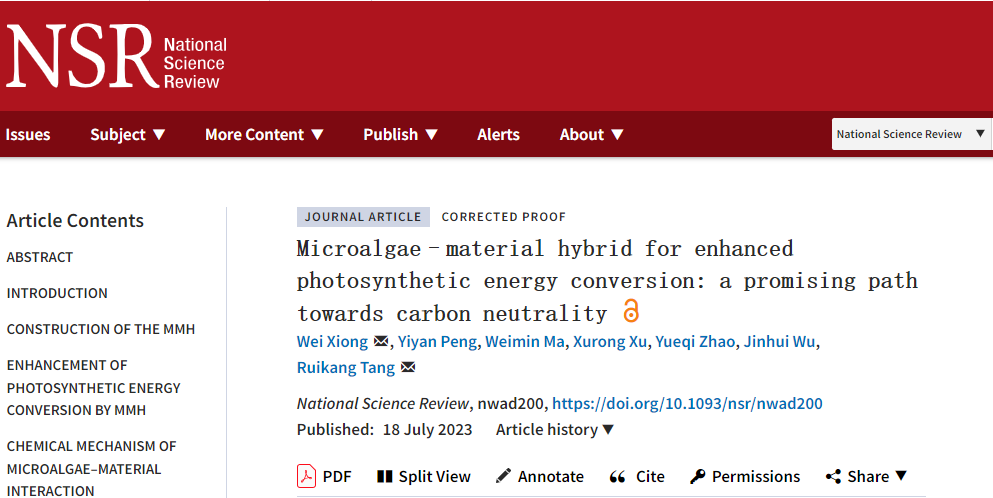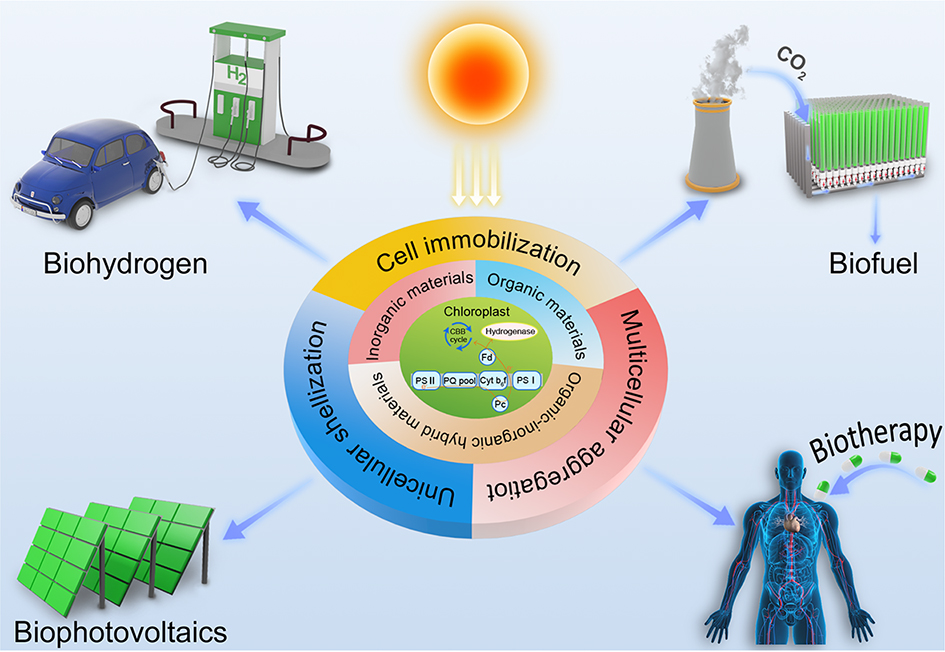National Science Review published a review article by Wei Xiong’s Group of Nanchang University: Microalgae-material hybrid promotes carbon neutrality

Recently, Prof. Wei Xiong of our college and Prof. Ruikang Tang of Zhejiang University published a review in National Science Review, titled “Microalgae-material hybrid for enhanced photosynthetic energy conversion: a promising path towards carbon neutrality”. In this review, the concept of Microalgae Material Hybrid (MMH) is proposed for the first time, and the construction methods of MMH and its application in the fields of energy and health are systematically reviewed. In addition, the current problems and future challenges of MMH are analyzed, and the prospects for MMH to contribute to carbon neutrality are outlooked.

Microalgae are ancient and widespread photosynthetic organisms on Earth, and they are also the most efficient photosynthetic organisms on Earth. The photosynthetic efficiency of microalgae is 10 to 50 times that of land plants. It is estimated that microalgae can fix about 90 billion tons of carbon dioxide per year, which accounts for more than 40% of the global net photosynthetic carbon fixation. With the intensification of global warming and the proposal of China's dual carbon reduction goals, the role of microalgal photosynthesis is getting more and more attention. However, due to the characteristics of microalgae themselves, the microalgal photosynthetic energy conversion cannot be applied on a large scale. In nature, organisms can form organic-inorganic composites through biomineralization to achieve functional evolution and enhance environmental adaptability. Inspired by the phenomenon of biomineralization, scientists have tried to confer microalgae new functions through the combination of materials and microalgae, so as to realize the utilization of microalgal photosynthetic energy. Compared with traditional genetic engineering, the material-based microalgae functional transformation is easier to operate and cheaper. In the future, the application of MMH technology in the fields of clean energy, environmental protection and health will promote carbon neutrality.
This is the first paper published in National Science Review by Nanchang University as the first corresponding author unit. Wei Xiong, professor of Nanchang University, is the first author & corresponding author; Ruikang Tang, professor of Zhejiang University, is the co-corresponding author; Yiyan Peng, a master student in Wei Xiong's research group, is the second author. Professor Weimin Ma from Shanghai Normal University, Professor Xurong Xu from Zhejiang University, Dr. Yueqi Zhao from Run Run Shaw Hospital of Zhejiang University, and Professor Jinhui Wu from Nanjing University provided important writing guidance for this article.
Dr. Wei Xiong has been committed to studying the construction and application of MMH for a long time, who has published many papers in the important academic journals at home and abroad, such as Natl.Sci. Rev., Angew.Chem.Int.Ed., Enviro.sci. Tchnol., and has been granted 2 invention patents and transferred them.
National Science Review (NSR), directed by the Chinese Academy of Sciences and sponsored by China Science and Technology Publishing and Media Co., LTD. (Science Press), is positioned as a strategic and oriented high-end comprehensive English journal (monthly). It has been included in SCIE, PubMed Central, Scopus, EI, CSCD and other journal retrieval systems, with an impact factor of 20.6 in 2022, ranking fourth in the global multidisciplinary comprehensive journals (5%, Q1).
Original link: https://doi.org/10.1093/nsr/nwad200